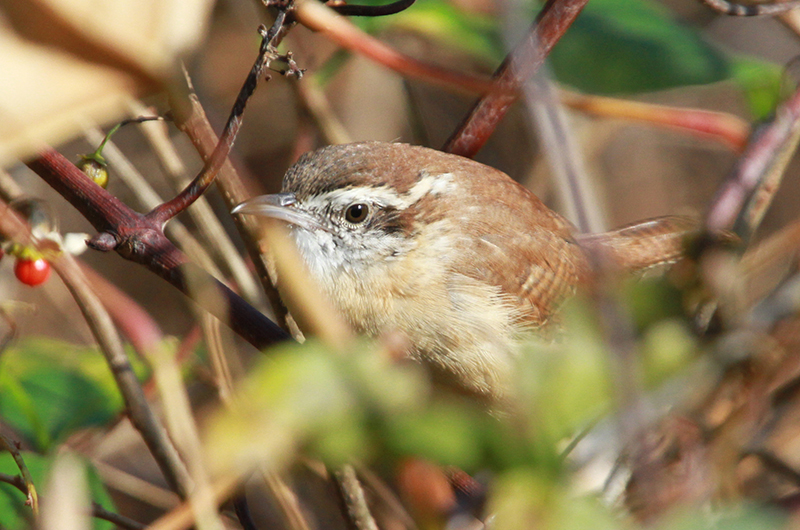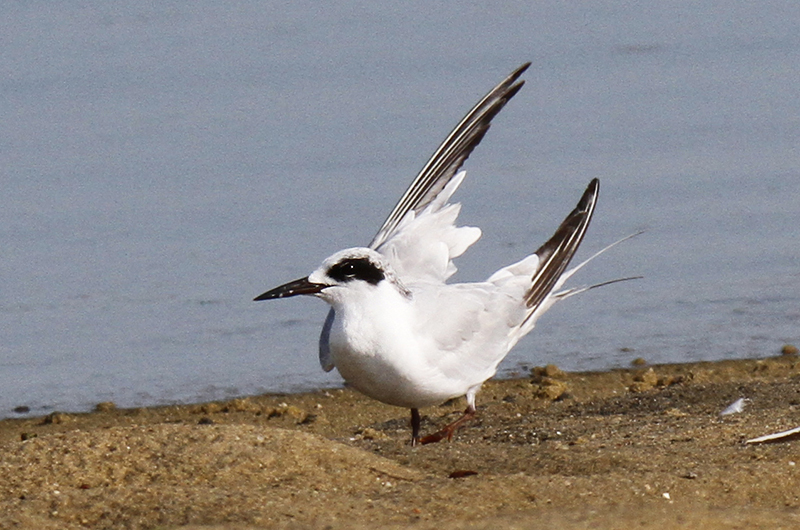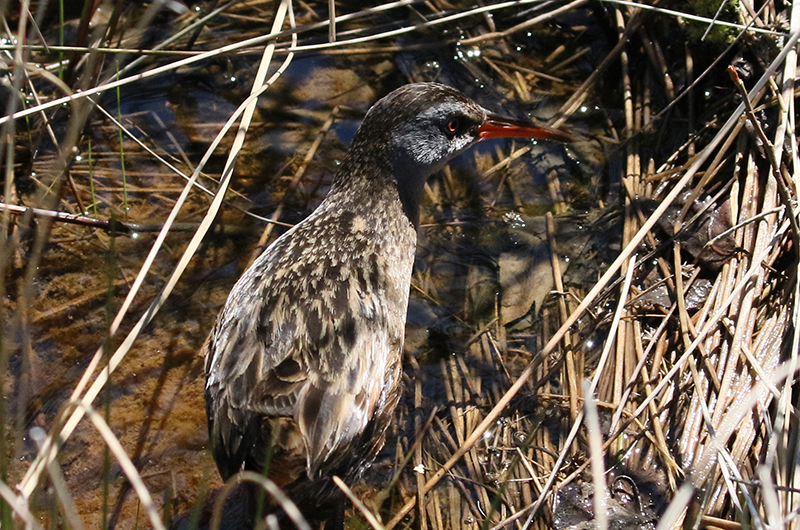American goldfinches are conspicuous. Their flight call, “potato chip, potato chip, ...” (I am not kidding) can be heard near almost any field. It does not have to be a big field, as Samuel Kent saw them in downtown Edgartown on July 17. I even hear them from woodlands as they fly by above the canopy. Their undulating flight is quite distinctive too, although woodpeckers also have this flight pattern. Sharon Simonin photographed a male at the Tisbury Marketplace perched by a thistle flower that had gone to seed. They use thistle and milkweed seeds in their nests and also to feed their young. Thistle seed – also known as nyger – is also one of their preferred foods at feeders.
Another species frequently heard singing in the woods is the red-eyed vireo. This loud songster has a robin-like song that usually is given as they sit motionless amongst the leaves of trees; it takes patience and a bit of luck to see them. They will keep singing well into August.
The other birds that frequently sing through the summer are robins and Carolina wrens. I hear the latter species singing or scolding – they are easily riled – in my yard almost every day of the year, even through the winter months!
Bird Sightings
A new species for the year is a Forster’s tern, which Warren Woessner saw on July 17 on Norton Point. They are migrants – their closest nesting grounds are in Wisconsin and Minnesota. His other highlights included eight short-billed dowitchers and two least sandpipers.
Stu Wilson, Cathy Paris and Susan Whiting birded Tisbury Great Pond on July 17 and found basically the same shorebirds as reported last week, with a couple of species becoming more common; there were 14 piping plovers, 30 semipalmated sandpipers, 12 willets, and six lesser yellowlegs. At Red Beach on Menemsha Pond, they found 15 piping plovers, seven least sandpipers and one lesser yellowlegs. A black skimmer showed up on the northern part of Tisbury Great Pond that day, which seems to be the furthest this species has ranged from their breeding colony at Little Beach in Edgartown. And Pete Gilmore spotted five lesser yellowlegs on July 16 at Sepiessa Point.
On July 16, Jeff Bernier spotted a juvenile Virginia rail in the salt marsh between Sheriff’s Meadow Sanctuary and Eel Pond. This youngster was also seen by Danielle Crudden on July 17. These sightings confirm that this shy and inconspicuous species nests there. Luanne Johnson reports that they nested there when she conducted a marsh nesting bird survey in 2012 or 2013, and Matt Pelikan also reports them nesting there many years ago.
Is the Katama sandhill crane leaving? Jeff Bernier observed it flying west over Crackatuxet Pond toward Edgartown Great Pond on July 14.
There are numerous reports of nesting birds this week. Sharon Simonin saw mute swans with four cygnets on Farm Pond on July 13. Debra Luce spotted a family of mallard with seven ducklings at the Head of the Lagoon; Sheriff’s Meadow Sanctuary has already produced nine fledgling mallards and, on July 16, there were two more broods totaling 12 downy chicks. Suzan Bellincampi reports that a total of five osprey have fledged from the two nests at Felix Neck. And Tim Brew reports fledged Canada geese and mute swans at Felix Neck on July 16. Lisa Strachan has had fun watching Carolina wrens busily feeding youngsters which have now left their nest. Sharon Simonin observed black-capped chickadees feeding their young on July 13, while Susan Whiting observed recently fledged hairy woodpeckers at Great Rock Bight. At Cedar Tree Neck, I observed recently fledged red-bellied woodpeckers, eastern towhees and common yellowthroats.
Katama has been productive. Bank and barn swallows are concentrating there, as reported by both Bob Shriber on July 15 and Lanny McDowell on July 17. Eastern kingbirds have also been conspicuous there. On July 13, Warren Woessner spotted both a Cooper’s hawk and a northern harrier. And Luanne Johnson spotted a house wren on July 12.
Other songbirds of note include a black-billed cuckoo that Wendy Culbert heard along Panhandle Road on July 20. Bob Woodruff has three species of flycatchers around his house: phoebe, great crested flycatcher and eastern kingbird. From Fulling Mill Brook on July 19, Stu Wilson reports red-eyed vireo, wood thrush, ovenbird and yellow warbler. Eleanor Foote has been hearing eastern wood-pewees singing off State Road in Chilmark. And Karen Mead has been hearing a whip-poor-will chanting along Moshup Trail.
From a boat in Muskeget Channel east of Wasque on July 9, Raymond Ewing observed a greater shearwater. This pelagic species is seldom seen from dry land. But Pete Gilmore found a dead one on July 15 that had washed up on Fuller Street Beach in Edgartown. Caitlin Carey found a dead Atlantic puffin on July 17 that had washed up on South Beach.
Lastly, they are not birds but I heard my first cicadas of the season calling from Oak Bluffs on July 19.
Robert Culbert is an ecological consultant with Nature Watch LLC living in Vineyard Haven.











Comments
Comment policy »